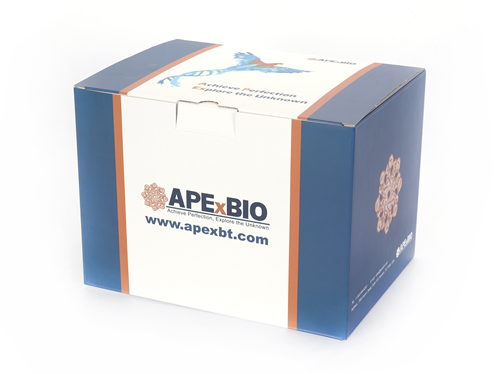Recombinant Mouse bFGF/FGF-2
Murine bFGF, encoded by the FGF2 gene, is a member of the fibroblast growth factor (FGF) family. Fibroblast growth factor was found in pituitary extracts in 1973 and then tested in a bioassay that caused fibroblasts to proliferate. After further fractionating the extract using acidic and basic pH, two different forms have isolated that named "acidic fibroblast growth factor" (FGF-1) and "basic fibroblast growth factor" (FGF-2). Murine bFGF shares 95 % amino acid sequence identity with human bFGF. Affinity between bFGF and its receptors can be increased by heparin or heparan sulfate proteoglycan. bFGF plays an important role in the regulation of cell survival, cell division, angiogenesis, cell differentiation and cell migration. bFGF are also involved in a variety of biological processes, including embryonic development , morphogenesis, tissue repair, tumor growth and invasion. Additionally, bFGF is frequently used for a critical component of cell culture medium, e.g., human embryonic stem cell culture medium, serum-free culture systems.
Reference:
1. Armelin HA. 1973. Proc Natl Acad Sci U S A. 70:2702-6.
2. Gospodarowicz D. 1974. Nature. 249:123-7.
3. Eswarakumar VP, Lax I, Schlessinger J. 2005. Cytokine Growth Factor Rev. 16:139-49.
4. Ornitz DM, Xu J, Colvin JS, et al. 1996. J Biol Chem. 271:15292-7.
5. Landriscina M, Bagala C, Mandinova A, et al. 2001. J Biol Chem. 276:25549-57.
6. Fernandez IS, Cuevas P, Angulo J, et al. 2010. J Biol Chem. 285:11714-29.
7. Liu Y, Song Z, Zhao Y, et al. 2006. Biochem Biophys Res Commun. 346:131-9.
|
Gene ID |
14173 |
|
Accession # |
P15655 |
|
Alternate Names |
FGF-2, HBGF-2 |
|
Source |
Escherichia coli. |
|
M.Wt |
Approximately 16.5 kDa, a single non-glycosylated polypeptide chain containing 146 amino acids. |
|
AA Sequence |
MPALPEDGGA AFPPGHFKDP KRLYCKNGGF FLRIHPDGRV DGVREKSDPH VKLQLQAEER GVVSIKGVCA NRYLAMKEDG RLLASKCVTE ECFFFERLES NNYNTYRSRK YSSWYVALKR TGQYKLGSKT GPGQKAILFL PMSAKS |
|
Appearance |
Sterile Filtered White lyophilized (freeze-dried) powder. |
|
Stability & Storage |
Use a manual defrost freezer and avoid repeated freeze-thaw cycles. - 12 months from date of receipt, -20 to -70 °C as supplied. - 1 month, 2 to 8 °C under sterile conditions after reconstitution. - 3 months, -20 to -70 °C under sterile conditions after reconstitution. |
|
Formulation |
Lyophilized from a 0.2 µm filtered solution in PBS, pH 7.4. |
|
Reconstitution |
We recommend that this vial be briefly centrifuged prior to opening to bring the contents to the bottom. Reconstitute in sterile distilled water or aqueous buffer containing 0.1 % BSA to a concentration of 0.1-1.0 mg/mL. Stock solutions should be apportioned into working aliquots and stored at ≤ -20 °C. Further dilutions should be made in appropriate buffered solutions. |
|
Biological Activity |
Fully biologically active when compared to standard. The ED50 as determined by a cell proliferation assay using murine balb/c 3T3 cells is less than 1.0 ng/ml, corresponding to a specific activity of > 1.0 × 106 IU/mg. |
|
Shipping Condition |
Gel pack. |
|
Handling |
Centrifuge the vial prior to opening. |
|
Usage |
For Research Use Only! Not to be used in humans. |
Quality Control & MSDS
- View current batch:
-
Purity > 98 % by SDS-PAGE and HPLC analyses.
- Datasheet
Endotoxin: Less than 1 EU/µg of rMubFGF as determined by LAL method.








